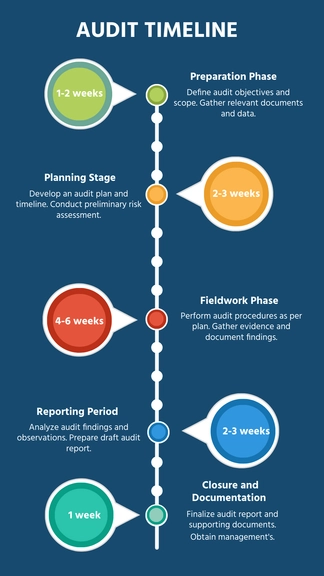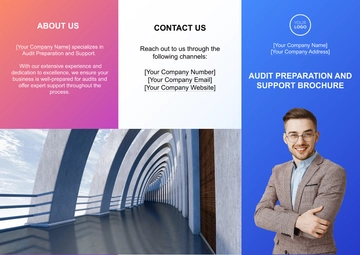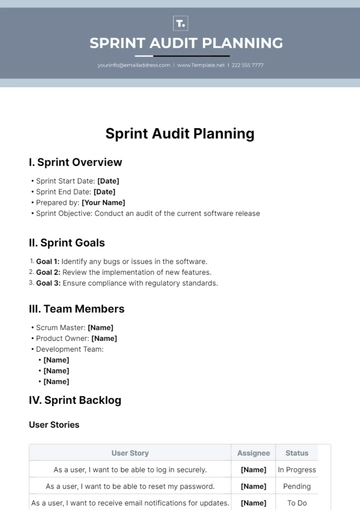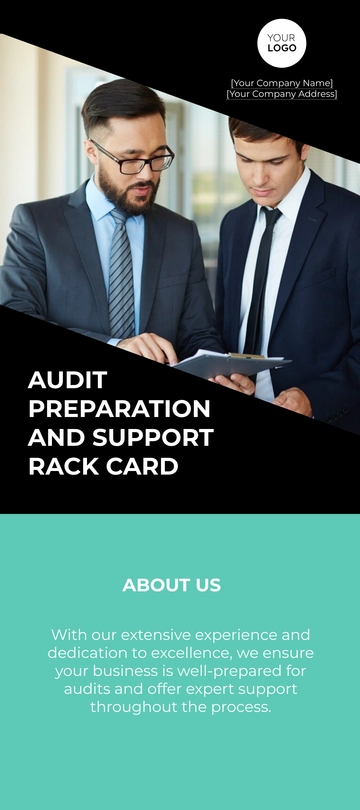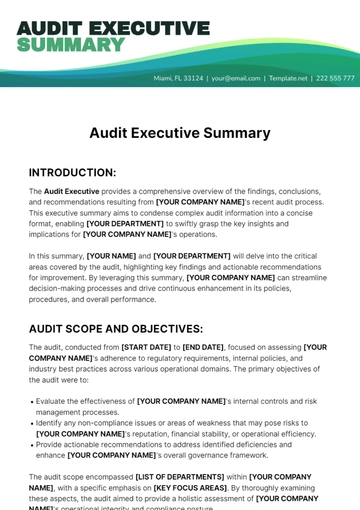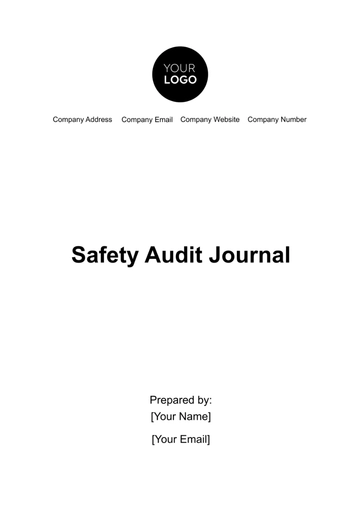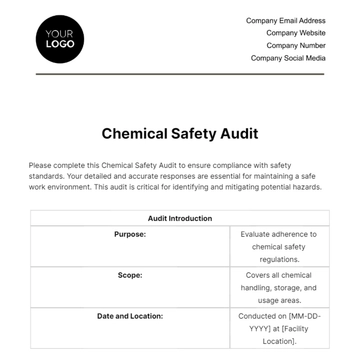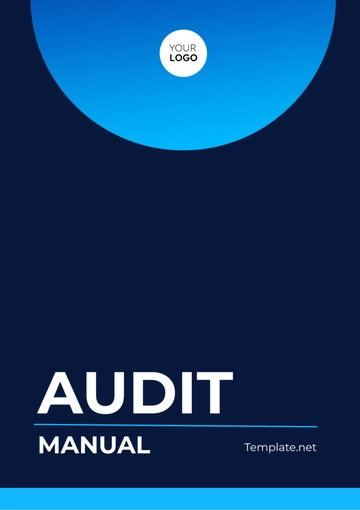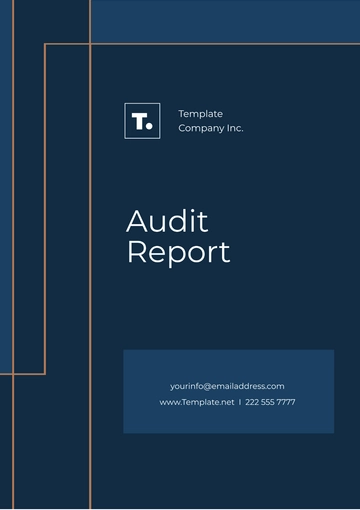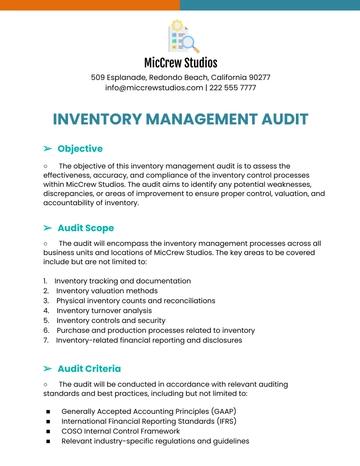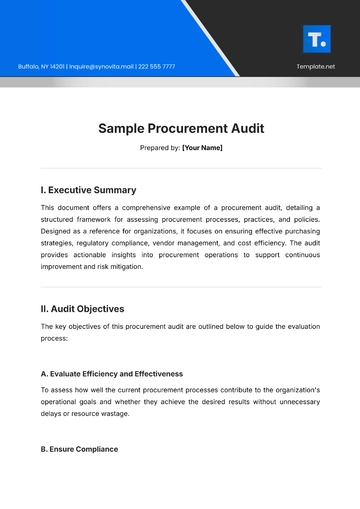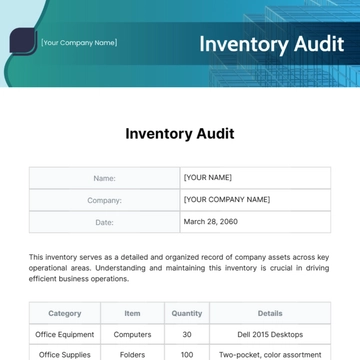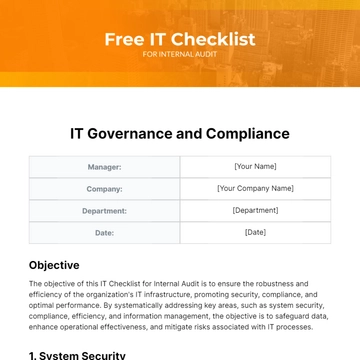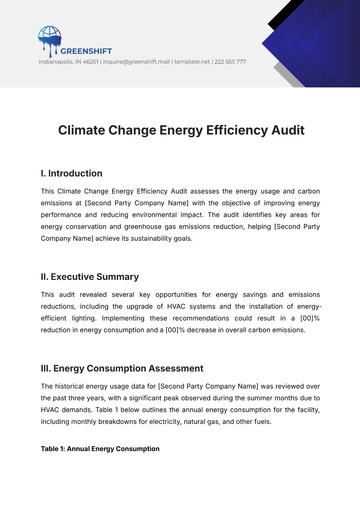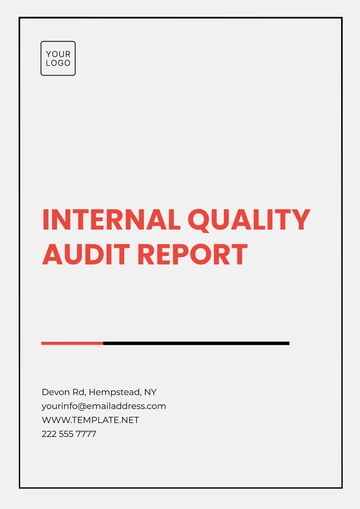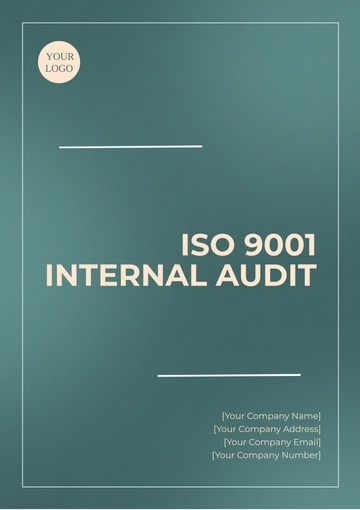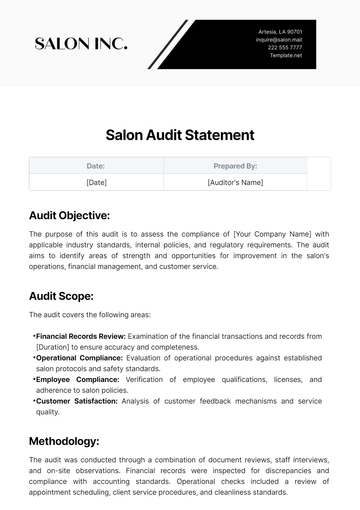Free Finance Audit System Feasibility Study
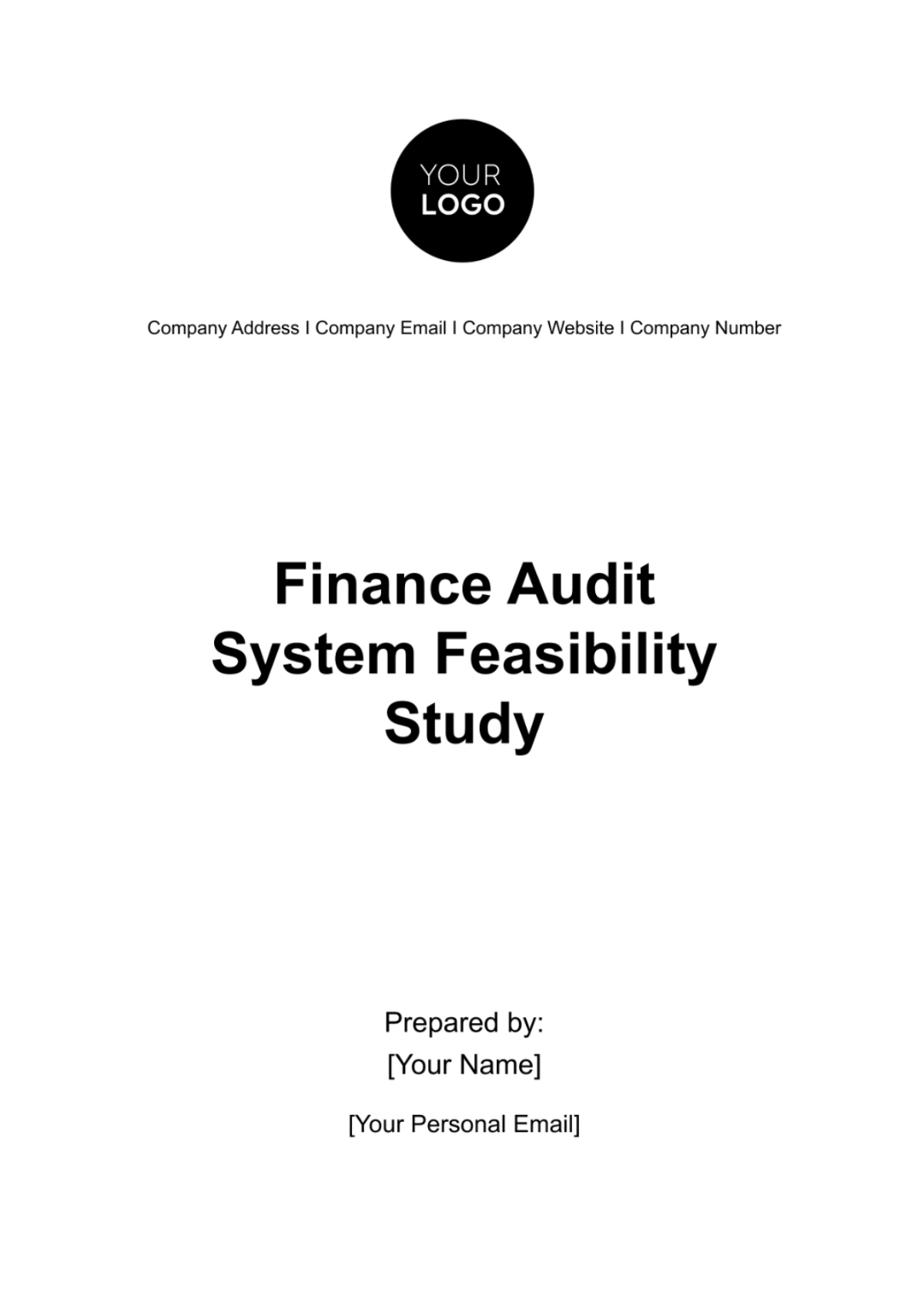
Executive Summary
A. Introduction
In response to the escalating demands for enhanced financial transparency and accountability, [Your Company Name] has embarked on a comprehensive feasibility study to evaluate the implementation of a state-of-the-art Finance Audit System. This system aims to revolutionize financial processes, mitigate risks, and augment the overall effectiveness of our audit procedures.
B. Purpose
The primary objective of this feasibility study is to scrutinize the viability and potential impact of introducing a Finance Audit System at [Your Company Name]. By conducting a thorough examination, we aim to identify the advantages, drawbacks, and overall feasibility of integrating this advanced system into our organizational framework.
C. Scope
This study encompasses an exhaustive analysis of the current financial processes within [Your Company Name]. Additionally, it evaluates the required functionality and coverage of a Finance Audit System to ensure seamless alignment with the organization's strategic objectives. The scope extends to potential benefits, challenges, and the overall impact on operational efficiency.
D. Key Findings
Preliminary findings suggest that the implementation of a Finance Audit System holds immense potential for improving efficiency, accuracy, and compliance within [Your Company Name]. The system promises streamlined financial operations but also poses challenges related to data security and integration with existing systems. A comprehensive examination of these key findings will guide our subsequent decisions.
Background
A. Organizational Background
[Your Company Name] stands as a distinguished technology entity, known for its rich history of groundbreaking accomplishments and unwavering commitment to excellence. Our headquarters are strategically located at [Your Company Address], serving as the hub for innovation and collaboration. Feel free to reach out to us at [Your Company Number] for any inquiries or further information. Explore a comprehensive overview of our operations, achievements, and vision on our website at [Your Company Website].
B. Industry Overview
The technology landscape is marked by continuous evolution, with an increasing emphasis on adopting cutting-edge technologies to enhance financial operations. As [Your Company Name] strives to maintain its leadership position, the implementation of a modern Finance Audit System becomes not just a necessity but a strategic imperative. This system ensures agility, accuracy, and compliance with the latest industry standards, positioning us as pioneers in the technology industry.
Objectives
A. Main Objectives
The primary objectives of implementing the Finance Audit System at [Your Company Name] are:
Streamlined Financial Processes
To streamline and optimize existing financial processes, reducing redundancy and improving overall efficiency.
Enhanced Accuracy and Reliability
To enhance the accuracy and reliability of financial data through automated processes and real-time data validation.
Strengthened Audit Trail
To strengthen the audit trail, ensuring a transparent and traceable record of all financial transactions and activities.
Regulatory Compliance
To ensure compliance with industry regulations and standards, reducing the risk of legal issues and financial penalties.
B. Secondary Objectives
In addition to the main objectives, the Finance Audit System aims to achieve the following secondary objectives:
Improved Decision-Making
To provide accurate and timely financial information, empowering stakeholders to make informed and strategic decisions.
Cost Reduction
To identify opportunities for cost reduction through the elimination of manual and error-prone processes.
Scalability
To design a system that is scalable, accommodating the organization's future growth and evolving financial needs.
Methodology
A. Data Collection
The data collection process involved a combination of methods, including interviews with key personnel, surveys distributed to relevant departments, and a comprehensive analysis of existing financial data. This multi-faceted approach ensured a holistic understanding of the organization's current financial landscape.
Interviews
Key personnel from finance, IT, and auditing departments were interviewed to gather insights into existing processes, pain points, and expectations regarding a Finance Audit System.
Surveys
Surveys were distributed to employees involved in financial transactions to capture user perspectives, challenges faced, and expectations from an improved financial system.
Data Analysis
Existing financial data, including transaction records, audit reports, and compliance documents, were analyzed to identify patterns, discrepancies, and areas for improvement.
B. Stakeholder Involvement
Stakeholder involvement was crucial throughout the feasibility study. The main stakeholders included:
Internal Stakeholders
Finance Department
IT Department
Audit Department
External Stakeholders
[Your Partner Company Name], our potential partner in system implementation.
Stakeholder input was gathered through regular meetings, workshops, and feedback sessions to ensure a comprehensive understanding of diverse perspectives.
Market Analysis
A. Competitive Landscape
Key Competitors
In assessing the competitive landscape, we identified the following key competitors in the Finance Audit System market:
Competitor Name | Strengths | Weaknesses |
|---|---|---|
[FinTech Solutions] | Robust features and functionalities | High implementation costs |
Comparative Analysis
A comparative analysis was conducted to evaluate the strengths and weaknesses of each competitor. This analysis will inform our decision-making process and guide the customization of the Finance Audit System to meet the specific needs of [Your Company Name].
B. Market Trends
Technological Advancements
The Finance Audit System market is witnessing a shift towards advanced technologies such as artificial intelligence (AI) and machine learning (ML). These technologies offer predictive analytics, anomaly detection, and enhanced data validation, aligning with the goals of [Your Company Name].
Cloud-Based Solutions
There is a growing trend towards cloud-based Finance Audit Systems, offering flexibility, accessibility, and scalability. Adopting a cloud-based approach aligns with [Your Company Name]'s goal of achieving operational efficiency.
Regulatory Compliance
Increased focus on regulatory compliance is shaping the development of Finance Audit Systems. Solutions that seamlessly integrate compliance features have a competitive edge, ensuring [Your Company Name] remains compliant with industry standards.
Technical Requirements
A. Hardware
Server Infrastructure
The Finance Audit System will require a robust server infrastructure to handle the processing and storage of financial data. A dedicated server room equipped with high-performance servers is recommended.
Network Components
A secure and reliable network infrastructure is crucial. This includes routers, switches, and firewalls to ensure seamless communication between different components of the Finance Audit System.
B. Software
Core System Software
The core software of the Finance Audit System should include modules for financial data processing, audit trail management, and reporting. Integration with existing ERP systems and databases is essential.
Security Software
Implementing advanced security software is imperative. This includes encryption tools, access controls, and regular security updates to safeguard sensitive financial data.
C. Security
Data Encryption
All financial data must be encrypted to prevent unauthorized access. Strong encryption algorithms will be employed to ensure the confidentiality and integrity of the data.
Access Controls
Granular access controls will be implemented, allowing different levels of access based on user roles. This ensures that only authorized personnel can view or modify specific financial information.
Cost Analysis
A. Development Costs
Software Development
The estimated cost for software development is [$500,000]. This includes customization, integration with existing systems, and the creation of modules for financial data processing, audit trail management, and reporting.
Hardware Acquisition
The investment in server infrastructure and network components is projected to be [$200,000]. This covers the procurement of high-performance servers, routers, switches, and other necessary hardware components.
Security Implementation
The implementation of advanced security measures, including data encryption and access controls, is estimated to cost [$100,000].
B. Operational Costs
Training and Implementation
Allocating resources for training personnel and implementing the Finance Audit System is projected at [$50,000]. This includes conducting workshops, providing user manuals, and ensuring a smooth transition.
Maintenance and Support
Annual maintenance and support costs are estimated at [$80,000]. This covers regular updates, bug fixes, and technical support to ensure the continued effectiveness of the Finance Audit System.
Potential Upgrades
Reserving funds for potential system upgrades is essential. An estimated [$50,000] is allocated annually to stay current with technological advancements and evolving industry standards.
Risk Assessment
A. Identification
Data Security Risks
The primary risk identified is potential data breaches, which could compromise sensitive financial information. Mitigation strategies include implementing robust encryption and access controls.
Integration Challenges
Integration with existing systems may pose challenges, leading to disruptions in financial processes. Detailed planning and collaboration with the IT department are crucial to address these challenges.
Resistance to Change
Resistance from employees accustomed to existing processes is a perceived risk. A comprehensive change management strategy, including communication and training, will be implemented to mitigate this risk.
B. Mitigation
Security Measures
Implementing state-of-the-art security measures, including regular security audits and employee training, will mitigate the risk of data security breaches.
Pilot Implementation
Conducting a pilot implementation with a small group of users will help identify and address integration challenges before full-scale deployment.
Change Management
A well-structured change management plan, including communication strategies and training programs, will address employee resistance and foster a positive transition.
Conclusion
A. Feasibility Recommendation
Based on the comprehensive analysis conducted throughout this feasibility study, it is recommended that [Your Company Name] proceed with the implementation of the Finance Audit System. The potential benefits, including streamlined financial processes, enhanced accuracy, and strengthened audit trails, outweigh the identified challenges. The system aligns strategically with the organization's objectives and positions [Your Company Name] to maintain a competitive edge in the rapidly evolving technology landscape.
- 100% Customizable, free editor
- Access 1 Million+ Templates, photo’s & graphics
- Download or share as a template
- Click and replace photos, graphics, text, backgrounds
- Resize, crop, AI write & more
- Access advanced editor
Explore audit system feasibility with the Finance Audit System Feasibility Study Template on Template.net. This editable and customizable study simplifies the assessment process. Tailor content effortlessly using our Ai Editor Tool, ensuring adaptability and precision. Elevate your financial strategies with this user-friendly template, offering a comprehensive approach to crafting personalized feasibility studies for informed decision-making and strategic financial planning.
